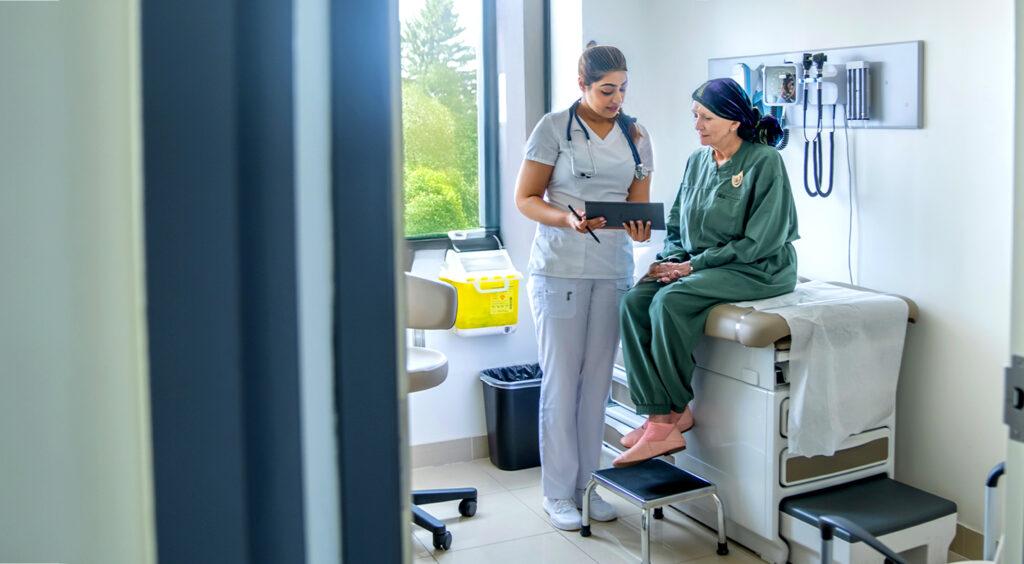New variants, new vaccines: what to know about COVID-19 for fall 2023
By Brett Goldhawk

As we head into fall, cases of COVID-19 are once again rising across Canada, fuelled by new variants that are offshoots of the original Omicron variant.
At the same time, Canada is rolling out an updated suite of vaccines that are more tailored to currently circulating strains of the virus.
Dr. Horacio Bach, a clinical assistant professor with UBC’s division of infectious diseases and researcher at the Immunity and Infection Research Centre, answers key questions about the new variants and vaccines.
What makes COVID-19 variants different from each other?
All viruses mutate over time, which is what gives rise to new variants. Each variant has genetic changes that can affect the virus’s behaviour including transmissibility and its ability to evade the immune system.
What variants are we seeing right now?
Multiple new variants are expected to circulate this fall. Right now, the Eris variant (Omicron EG.5) is the dominant strain in Canada, but we also recently detected the first Canadian cases of Pirola (Omicron BA.2.86).
Scientists are watching the Pirola variant closely because it contains 34 new spike protein mutations, which is a large number that could potentially increase its ability to reinfect and evade immunity. While we don’t yet have extensive information on this new COVID variant’s effects, we know that new variants are becoming more contagious.
According to the latest statistics, the symptoms of the new variants are more like cold symptoms such as sore throat, runny nose, cough, sneezing, fatigue, muscle ache, altered sense of smell and headache. There’s currently no data to suggest that the new variants cause more serious illness.
What’s different about the new vaccines?
Canada is expected to roll out three new vaccine formulations this fall, including updated mRNA vaccines from Pfizer-BioNTech and Moderna, as well as a protein-based vaccine from Novavax.
The new vaccines use updated sequences corresponding to the variant XBB.1.5, which was one of the dominant variants through spring and summer and continues to circulate today. While the Eris variant is now dominant in Canada, and Pirola is emerging, preliminary evidence suggests that the new vaccines will still offer protection against these variants.
When should people get the new vaccine?
Canada’s National Advisory Committee on Immunization (NACI) recommends that all eligible individuals receive one dose of the new vaccine. Vaccines should be taken after six months from the last booster or COVID-19 infection. NACI stresses that immunization is particularly important for those at increased risk of severe illness, including older adults, residents of long-term care, people who are pregnant, people with underlying medical conditions and other vulnerable groups.
Can you receive a COVID-19 vaccine and flu vaccine together?
Yes, the new COVID-19 vaccines will be rolling out alongside annual flu shots and it’s safe to get both at the same time.
Do rapid tests still work? What about drug therapies?
The effectiveness of existing diagnostic tests is mostly unchanged. Based on the mutation profile of the new variants, the anticipated impact on both molecular and antigen-based testing is low. Importantly, the effectiveness of rapid tests is highly dependent on how the test is performed, so it’s important to follow the instructions closely.
We also expect that existing drug treatments like Paxlovid, Veklury and Lagevrio will continue to remain effective based on examination of the variant’s mutation profile.
What can people do to protect themselves from COVID-19 this fall?
All of the ways we’ve learned to protect ourselves still apply today—get vaccinated, stay home if you’re sick, wash your hands periodically, and consider wearing a high-quality mask or fitted respirator and keeping a safe distance from others (minimum of two metres) when possible, particularly in crowded indoor spaces. Vulnerable people should seek treatment if they contract the virus and are at high risk of getting very ill.
Brett Goldhawk is a writer with UBC Faculty of Medicine. This article was republished on September 15, 2023, from UBC Media Relations. Read the original article here. To republish this article, please contact UBC Media Relations.


